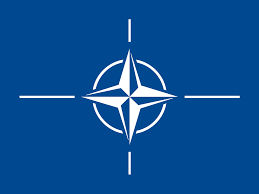
The proliferation of small, inexpensive, and highly capable Unmanned Aerial Systems (UAS) has irrevocably altered the character of modern warfare. Recent conflicts, most notably in Ukraine and the Middle East, have demonstrated that the theoretical threat of coordinated drone swarms is now a battlefield reality. These swarms, capable of overwhelming traditional air defense systems through saturation, present a critical challenge to ground forces, critical infrastructure, and naval assets. In response, defense establishments worldwide are accelerating the development and deployment of mobile, multi-layered Counter-UAS (C-UAS) architectures designed not merely to protect static locations, but to provide a protective bubble for maneuvering forces.
This shift marks a significant evolution in air defense doctrine. The challenge is no longer solely about intercepting sophisticated aircraft or ballistic missiles at high altitudes, but about controlling the low-altitude airspace where swarms of small, often autonomous drones operate. The development of a robust mobile C-UAS capability is therefore not an incremental upgrade but a fundamental necessity for maintaining freedom of action and ensuring force survivability in a contested environment.
From Asymmetric Threat to Core Capability
The historical trajectory of the UAS threat explains the urgency behind current C-UAS innovation. For years, the primary focus was on large, high-altitude, long-endurance (HALE) platforms like the Global Hawk or medium-altitude (MALE) systems like the Predator, operated by technologically advanced states. However, the past decade has seen a dramatic democratization of drone technology. Non-state actors in Syria and Iraq began modifying commercial quadcopters for reconnaissance and payload delivery, demonstrating their utility in asymmetric conflicts. This trend has since matured into state-level employment of sophisticated drone tactics.
The war in Ukraine serves as the principal catalyst for the current C-UAS paradigm. Both sides have extensively used swarms of First-Person View (FPV) drones and loitering munitions to devastating effect against armor, artillery, and logistics convoys. This has highlighted a critical vulnerability: conventional air defense systems, designed to counter expensive, high-performance targets, are economically and tactically ill-suited to defeating hundreds of low-cost drones. The unsustainable cost-exchange ratio of using a multi-million-dollar missile to destroy a sub-$10,000 UAS has forced a doctrinal and technological rethink, prioritizing cost-effective and scalable solutions.
Strategic Implications of a Swarm-Centric Battlefield
The ability to deploy effective drone swarms directly challenges core tenets of combined arms maneuver. If ground forces cannot move without constant harassment and precision strikes from above, their operational tempo is crippled. This elevates the importance of mobile C-UAS from a supporting role to a co-equal element of any ground formation, as essential as armor or artillery support. A failure to secure the low-altitude airspace risks ceding a decisive tactical advantage to the adversary, regardless of superiority in other domains.
Consequently, military strategists are moving towards a layered, “system of systems” approach. This architecture integrates multiple sensor and effector types to create a comprehensive defense. The layers typically include: detection and tracking via specialized radars (like Ku-band), electro-optical/infrared (EO/IR) cameras, and radio frequency (RF) sensors; and neutralization through a range of effectors. These include kinetic solutions like cannon systems firing programmable airburst ammunition and small, guided interceptors, as well as non-kinetic options such as high-power electronic warfare jammers to sever command links. The key innovation is mounting these integrated systems on mobile platforms, such as armored vehicles, allowing the defensive shield to move with the protected force.
Key Actors and Technological Frontrunners
The race to field effective mobile C-UAS solutions involves a host of nations and defense industrial primes. The United States Army is actively pursuing programs like the Maneuver-Short Range Air Defense (M-SHORAD), which integrates a suite of sensors and weapons on a Stryker vehicle, and the Indirect Fire Protection Capability (IFPC), designed to counter UAS, rockets, and mortars. Key industry players like Raytheon with its Coyote interceptor and KuRFS radar, Leonardo DRS with its M-LIDS platform, and Northrop Grumman are central to these efforts.
Internationally, Israel has long been a pioneer with systems like Rafael’s Drone Dome. European nations, galvanized by the conflict on their doorstep, are also investing heavily. Germany’s Rheinmetall is marketing its Skynex air defense system, while companies across the UK, France, and Sweden are developing bespoke solutions. Alliances like NATO are focused on establishing common standards and interoperability to ensure that member states can effectively collaborate in C-UAS operations, recognizing the transnational nature of the threat.
Future Scenarios: Directed Energy and AI Integration
The technological arms race between drone swarms and C-UAS is set to intensify. The next frontier in C-UAS technology lies in the integration of Artificial Intelligence (AI) and Directed Energy (DE) weapons. AI and machine learning algorithms are essential for rapidly detecting, classifying, and prioritizing threats within a dense swarm, enabling near-autonomous engagement to counter the speed and scale of an attack. Human operators can be quickly overwhelmed, making AI-driven decision support a critical enabler.
Directed Energy systems, including high-energy lasers (HEL) and high-power microwaves (HPM), promise a paradigm shift in C-UAS effectiveness. Lasers offer the potential for speed-of-light, precision engagements with a virtually unlimited magazine and a very low cost-per-shot, ideal for dealing with massed threats. HPM systems can disrupt or destroy the electronics of multiple drones simultaneously over a wide area, offering an effective counter to swarm tactics. As these technologies mature and are ruggedized for mobile deployment, they will become a cornerstone of future C-UAS architectures.
Conclusion
The emergence of the drone swarm as a potent battlefield weapon has forced a rapid and necessary evolution in air defense. The focus has decisively shifted from protecting fixed sites to providing mobile, resilient protection for forces on the move. The development of integrated C-UAS architectures, combining advanced sensors with a mix of kinetic and non-kinetic effectors, is now a top priority for modern militaries. Looking ahead, the successful fusion of AI and directed energy into these mobile platforms will determine who controls the low-altitude airspace, and ultimately, who holds the advantage on the 21st-century battlefield.
Source


